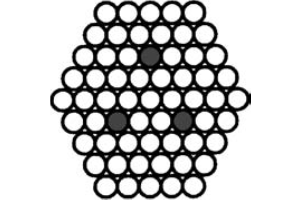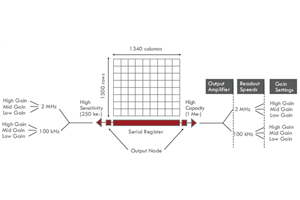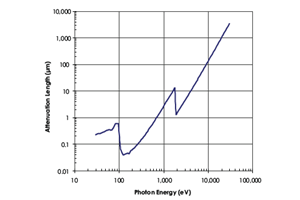Introduction
In indirect-detection cameras, incoming x-rays are absorbed in a polycrystalline or crystalline phosphor. The visible light emitted from this phosphor is channeled through a coherent fiberoptic bundle and subsequently detected by a camera, typically a back-illuminated or front-illuminated CCD camera.
Teledyne Princeton Instruments has developed two types of phosphors for x-ray imaging applications in the energy range between 5 keV and 50 keV. The Gd2O2S:Tb is recommended for x-ray energies <33 keV due to its higher absorption efficiency, while the CsI:Tl is recommended where higher resolution is required.
Polycrystalline Gadolinium Oxysulphide with Terbium
Teledyne Princeton Instruments has developed three distinct phosphors for 8, 12, and 17 keV x-ray energies based on Gd2O2S:Tb polycrystalline powder. To provide the best possible resolution and sensitivity, small-grain powder is used on special Mylar®. These phosphors are recommended when large image area, high efficiency, and lower cost are primary considerations.
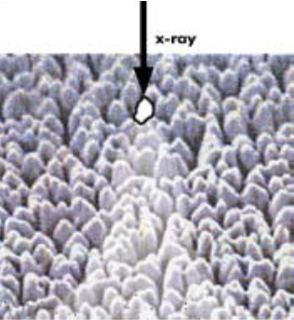
Type of Extramural Absorber (EMA)
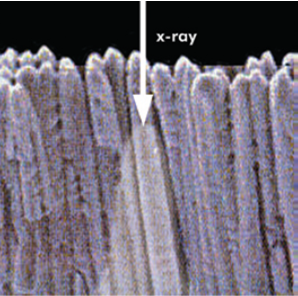
Teledyne Princeton Instruments has developed phosphors based on crystalline (needle structure) CsI:Tl for 8 and 24 keV x-ray energies, recommended when high resolution is the primary consideration. Although it has lower absorption at x-ray energies < 33 keV, CsI:Tl holds a number of advantages over GdOS:Tb powder phosphors, providing higher resolution, needles acting as a light guide, and more uniform light output due to special coatings.

